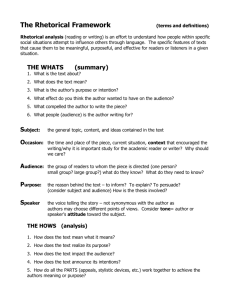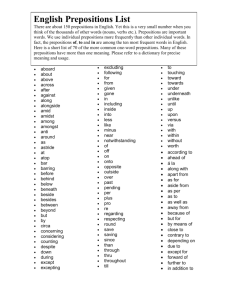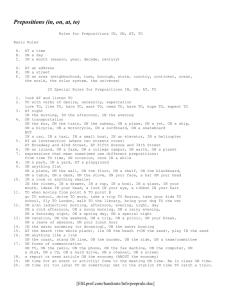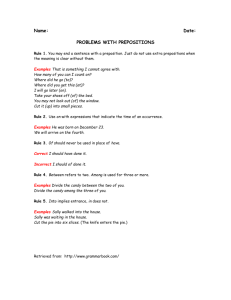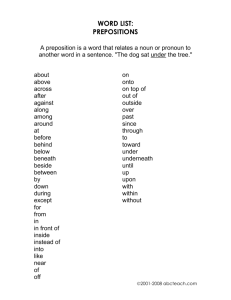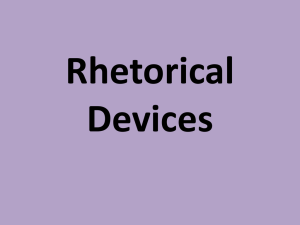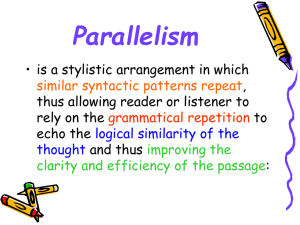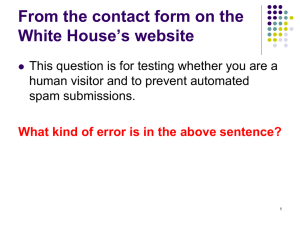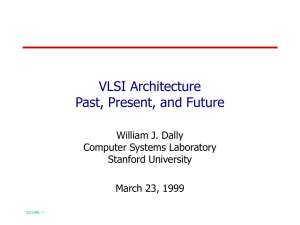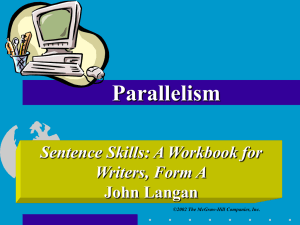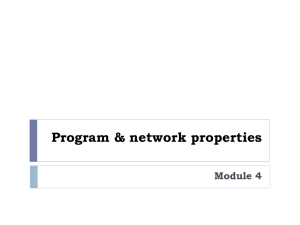Parallelism —material by Jennifer Troy Parallelism: A set of similarly
advertisement
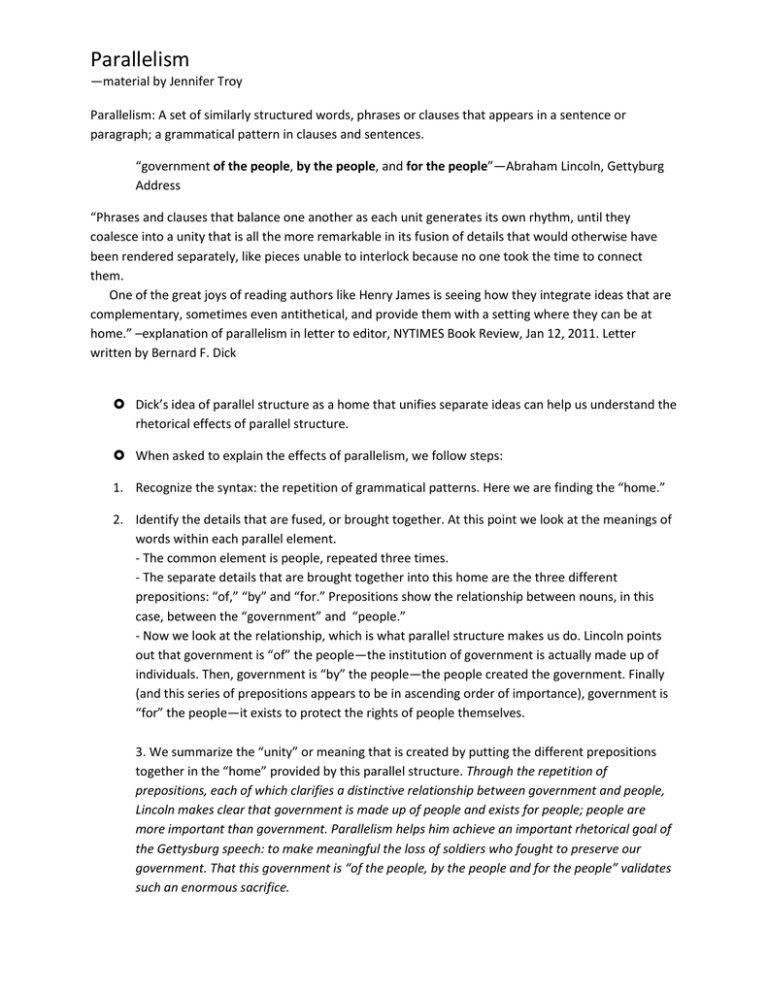
Parallelism —material by Jennifer Troy Parallelism: A set of similarly structured words, phrases or clauses that appears in a sentence or paragraph; a grammatical pattern in clauses and sentences. “government of the people, by the people, and for the people”—Abraham Lincoln, Gettyburg Address “Phrases and clauses that balance one another as each unit generates its own rhythm, until they coalesce into a unity that is all the more remarkable in its fusion of details that would otherwise have been rendered separately, like pieces unable to interlock because no one took the time to connect them. One of the great joys of reading authors like Henry James is seeing how they integrate ideas that are complementary, sometimes even antithetical, and provide them with a setting where they can be at home.” –explanation of parallelism in letter to editor, NYTIMES Book Review, Jan 12, 2011. Letter written by Bernard F. Dick Dick’s idea of parallel structure as a home that unifies separate ideas can help us understand the rhetorical effects of parallel structure. When asked to explain the effects of parallelism, we follow steps: 1. Recognize the syntax: the repetition of grammatical patterns. Here we are finding the “home.” 2. Identify the details that are fused, or brought together. At this point we look at the meanings of words within each parallel element. - The common element is people, repeated three times. - The separate details that are brought together into this home are the three different prepositions: “of,” “by” and “for.” Prepositions show the relationship between nouns, in this case, between the “government” and “people.” - Now we look at the relationship, which is what parallel structure makes us do. Lincoln points out that government is “of” the people—the institution of government is actually made up of individuals. Then, government is “by” the people—the people created the government. Finally (and this series of prepositions appears to be in ascending order of importance), government is “for” the people—it exists to protect the rights of people themselves. 3. We summarize the “unity” or meaning that is created by putting the different prepositions together in the “home” provided by this parallel structure. Through the repetition of prepositions, each of which clarifies a distinctive relationship between government and people, Lincoln makes clear that government is made up of people and exists for people; people are more important than government. Parallelism helps him achieve an important rhetorical goal of the Gettysburg speech: to make meaningful the loss of soldiers who fought to preserve our government. That this government is “of the people, by the people and for the people” validates such an enormous sacrifice.
